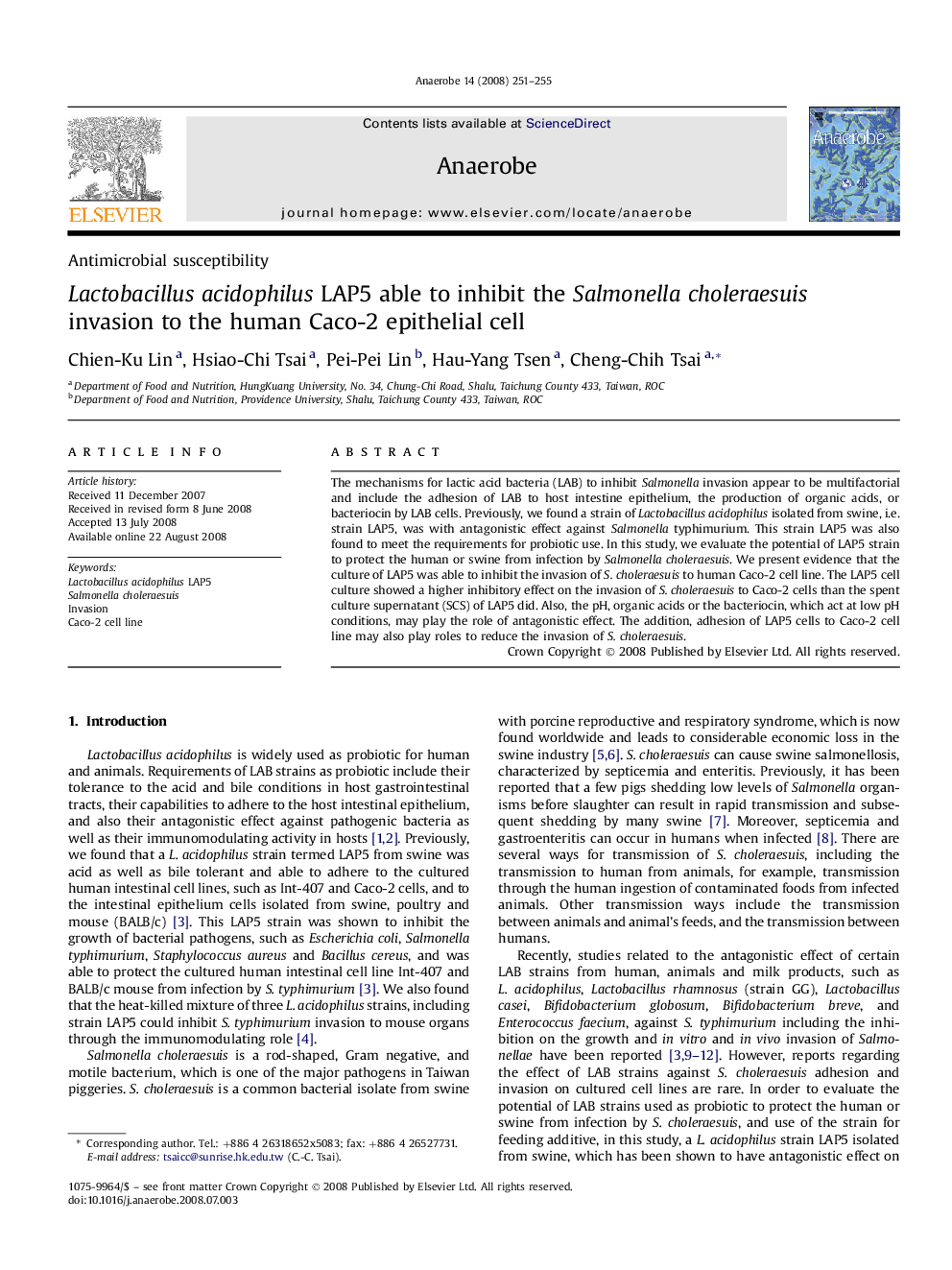| Article ID | Journal | Published Year | Pages | File Type |
|---|---|---|---|---|
| 3395886 | Anaerobe | 2008 | 5 Pages |
The mechanisms for lactic acid bacteria (LAB) to inhibit Salmonella invasion appear to be multifactorial and include the adhesion of LAB to host intestine epithelium, the production of organic acids, or bacteriocin by LAB cells. Previously, we found a strain of Lactobacillus acidophilus isolated from swine, i.e. strain LAP5, was with antagonistic effect against Salmonella typhimurium. This strain LAP5 was also found to meet the requirements for probiotic use. In this study, we evaluate the potential of LAP5 strain to protect the human or swine from infection by Salmonella choleraesuis. We present evidence that the culture of LAP5 was able to inhibit the invasion of S. choleraesuis to human Caco-2 cell line. The LAP5 cell culture showed a higher inhibitory effect on the invasion of S. choleraesuis to Caco-2 cells than the spent culture supernatant (SCS) of LAP5 did. Also, the pH, organic acids or the bacteriocin, which act at low pH conditions, may play the role of antagonistic effect. The addition, adhesion of LAP5 cells to Caco-2 cell line may also play roles to reduce the invasion of S. choleraesuis.
